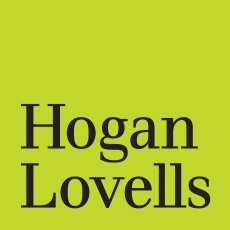This article was first published by the International Law Office, a premium online legal update service for major companies and law firms worldwide. Register for a free subscription.
According to Law 242/2016 of 2 December 2016, which sets out provisions to promote hemp cultivation and the agro-industrial hemp chain in Italy, production of foodstuffs is considered to be one of hemp's possible industrial uses.
Although Law 242/2016 contains no regulations on acceptable tetrahydrocannabinol (THC) levels in food products, it refers to the Ministry of Health's implementing regulation regarding THC content in foods (for further details please see "Regulation of cannabis use in food and cosmetics").
On 15 January 2020 the Ministry of Health published the THC Decree, which sets out the maximum THC content permitted in food products, together with guidance on the appropriate method of analysis.
The THC Decree sets out a list of hemp food products (Annex I) that are subject to the regulation. These include hemp seeds (including mashed and ground seeds other than flour) and other ingredients that are obtained from hemp seeds as flour or oil.
Hemp food products listed in Annex I may be placed on the market if their THC content does not exceed the following thresholds set out in Annex II:
- seeds and flour – up to 2mg of THC per 1kg of product;
- oil obtained from hemp seeds – up to 5mg of THC per 1kg of product; and
- food supplements containing food derived from hemp – up to 2mg of THC per 1kg of product.
The THC Decree defines 'total THC' as the concentration resulting from the sum of the concentrations of a substance "Δ9 -THC ((-)-trans- Δ9 -THC)" and the non-active acid precursor "Δ9 -THCA-A (delta-9-tetrahydrocannabinolic acid A)".
As far as the method of analysis is concerned, the sampling must be performed in accordance with EU Regulation 401/2006 laying down the methods of sampling and analysis for the official control of the levels of mycotoxins in foodstuffs, while the analysis should be carried out according to EU Recommendation 2016/2115 on the monitoring of the presence of Δ9-tetrahydrocannabinol, its precursors and other cannabinoids in food.
The list of hemp food products in Annex I of the THC Decree should not be regarded as exhaustive. Article 5(2) of the THC Decree clarifies that other hemp food products could be placed on the market. However, hemp food products that are not listed in Annexes I and II of the THC Decree do not enjoy the tolerance thresholds of THC maximum amount levels and must instead comply with EU Regulation 1881/2006 setting maximum levels for certain contaminants in foodstuffs.
The THC Decree includes a mutual recognition provision, according to which hemp-based food products legally marketed in another EEA state or in Turkey may be imported into and commercialised in Italy. Although this could introduce Italy to products that have a higher THC content, such imports are subject to EU Regulation 764/2008 laying down procedures relating to the application of certain national technical rules to products lawfully marketed in another member state. Therefore, the potential for marketing hemp food products whose THC content materially diverges from Italian law could be limited.
Some commentators have welcomed the new regulation as a liberalisation of the use of hemp in food products. However, on closer inspection, this conclusion proves to be unjustified. On the one hand, the foodstuffs that are listed in the THC Decree are those that have always been on the Italian market and considered THC free based on their raw materials (eg, flour and oil obtained from seeds). On the other hand, the minimum THC content levels set out in the THC Decree are amenable to a THC presence in traces. This is in line with Law 242/2016, which authorised the Ministry of Health to determine the THC residues in food but not the sale of food products with THC content. Moreover, the proposed THC thresholds remain highly restrictive for producers. The anticipated THC limits are:
- 0.0002% for seeds, flour and food supplements containing food derived from hemp; and
- 0.0005% for oil obtained from hemp seeds.
The new regulation is nonetheless helpful for the development of Italy's hemp industry. The determination of acceptable THC residues in food and the method for analysing THC detection are key factors for providing hemp producers with a clear legal framework and reducing the risk of potential liabilities that may constitute a breach of criminal law and have far-reaching consequences.




